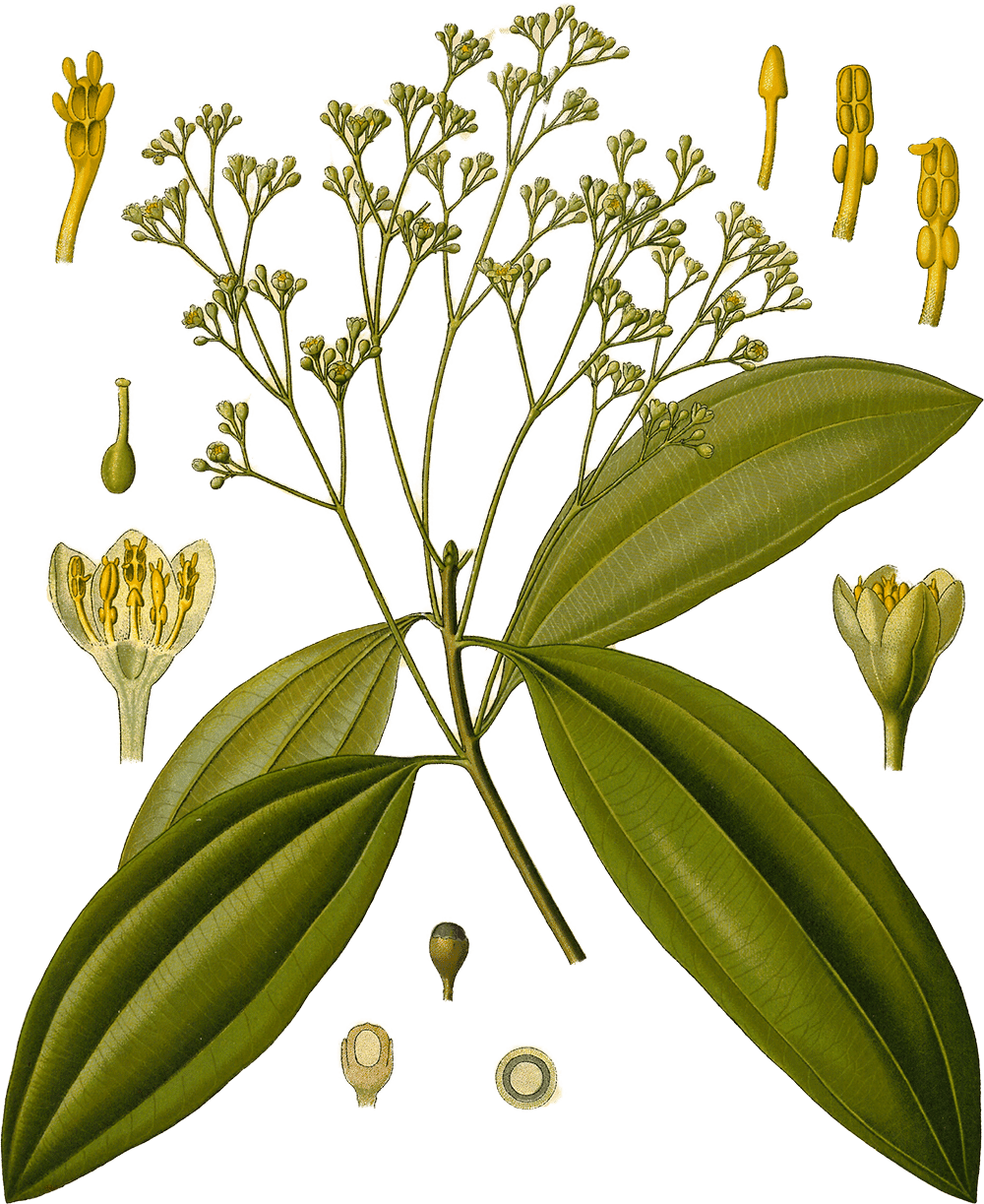Cassia #

Illustration of Cinnamomum cassia (L.) J.Presl. from Köhler's Medizinal-Pflanzen (1887)
Cassia (Cinnamomum cassia (L.) J.Presl.) is a culinary and medicinal spice from the Lauraceae family,1 originating in the region(s) of nan.2 It is used for its bark and fruit, primarily for flavor; diarrhea. Its aroma is described as pungent, cinnamon-like, with a heat index of 3.3
| English | Arabic | Chinese | Hungarian |
|---|---|---|---|
| cassia | سليخة | 肉桂 | kasszia(fahéj) |
Overview #
| id | cassia |
|---|---|
| species name | Cinnamomum cassia (L.) J.Presl. |
| family | Lauraceae |
| part used | bark; fruit |
| macroarea | Asia |
| region of origin | nan |
| cultivation | Indonesia; China; Vietnam; Timor-Leste; etc. |
| color | reddish brown |
| botanical database | POWO |
Etymologies #
English cassia, ca. 1000 < Latin casia ‘id.’, c. < Ancient Greek κασία kasía ‘id.’, c. < Ancient Hebrew קְצִיעָה qəṣîʿâ ‘a bark resembling cinnamon, but less aromatic, so called from being stripped off’, from qṣaʿ ’to cut off, strip off bark’ (hapax legomenon in the Bible; Ps. 45:9)
Arabic سليخة salīkha ‘cinnamon bark; cassia bark’ [peeled off, stripped off ], from salakha ’to pull off, strip off; skin, flay’; Semitic root s-l-kh; cf. cognates *
Mandarin Chinese 肉桂 ròuguì MC /kweiH/ ‘cassia’ [flesh-cinnamon ], guì is modified by ròu to distuinguish it from the osmanthus flower (桂花 guìhuā)
Names #
English #
| term | source |
|---|---|
| cassia | OED |
| Batavia cassia | Van Wyk, 2014 |
| Cassia cinnamon | Peter, 2012 |
| Chinese cassia | Van Wyk, 2014 |
| Chinese cinnamon | Van Wyk, 2014 |
| Indonesian cassia | Van Wyk, 2014 |
| Padang cassia | Van Wyk, 2014 |
| Saigon cinnamon | Van Wyk, 2014 |
| Vietnamese cassia | Van Wyk, 2014 |
| bastard cinnamon | OED |
| Korintje cassia | Van Wyk, 2014 |
| Indian bark | Van Wyk, 2014 |
| Indian cassia | Peter, 2012 |
Arabic #
| script | term | literal | source |
|---|---|---|---|
| سليخة | salīkha | peel, strip | Wehr, 1976 |
| الحاد المذاق | al-ḥādd al-madhāq | the sharp taste | Dietrich, 2004 |
| دارصيني الدون | dārṣīnī al-dūn | inferior cinnamon | |
| دارصيني الصين | dārṣīnī al-ṣīn | Chinese wood of China | Dietrich, 2004 |
| قرفة صينية | qirfa ṣīnīyya | Chinese bark | Wikipedia |
Chinese #
| script | term | literal | source |
|---|---|---|---|
| 肉桂 | ròuguì | flesh-cassia | Defrancis, 2003 |
| 官桂 | guānguì | official-cassia | Hu, 2005 |
| 桂皮 | guìpí | cassia-skin | Defrancis, 2003 |
| 桂心 | guìxīn | cassia-heart | Hu, 2005 |
| 桂 | guì | cassia | Defrancis, 2003 |
| 桂枝 | guìzhī | cassia-branches | Defrancis, 2003 |
| 桂子 | guìzǐ | cassia-seeds | Defrancis, 2003 |
POWO. (2022). Plants of the World Online (Botanical Database). Facilitated by the Royal Botanic Gardens, Kew. http://www.plantsoftheworldonline.org/ ↩︎
van Wyk, B.-E. (2014). Culinary Herbs and Spices of the World. University of Chicago Press, joint publication with the Royal Botanic Gardens, Kew. https://doi.org/10.7208/chicago/9780226091839.001.0001 ↩︎
Medicinal Spices Exhibit. (2002). UCLA Biomedical Library: History & Special Collections. https://unitproj.library.ucla.edu/biomed/spice/index.cfm?spicefilename=taste.txt&itemsuppress=yes&displayswitch=0 ↩︎